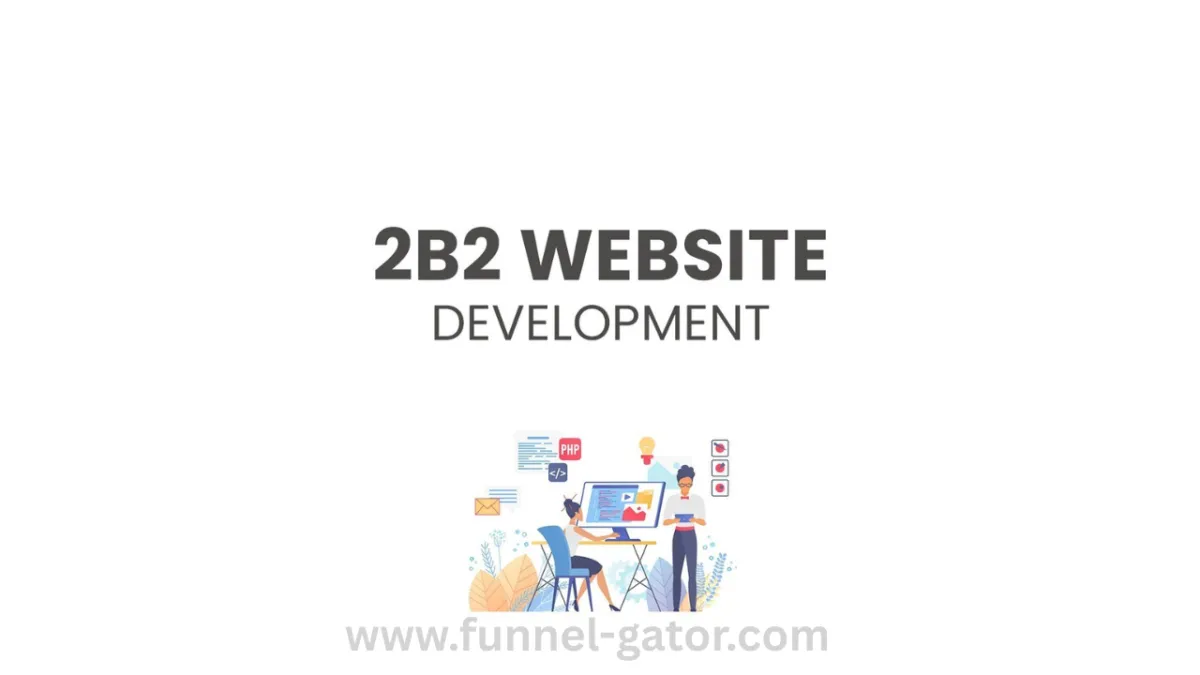
B2B Website Design and Development: A Complete Guide for Business Growth
In today’s digital world, your B2B website design and development isn't just your business card—it’s your best salesperson. Unlike casual websites, a B2B (Business-to-Business) website is tailored to help companies sell products or services to other companies. But designing and developing such a site isn't a one-size-fits-all job. It requires strategic thinking, the right technology, and a user-first approach.
So, if you're planning to build or upgrade your B2B website, this article will walk you through everything you need to know in plain English. Let's break it down!
Why Your B2B Website Matters More Than Ever
Let’s start with a short story.
A small IT consulting firm had been relying on cold emails and networking events to get clients. But after the pandemic, they launched a simple yet powerful B2B website with clear messaging, live chat, and downloadable brochures. In less than six months, they landed three long-term corporate clients—without stepping outside their office.
That’s the power of a well-designed B2B website.
Your website is often the first interaction a potential client will have with your brand. Unlike B2C (Business-to-Consumer), B2B buyers do thorough research before making any decision. So your website must:
Build trust
Show expertise
Make navigation easy
Provide clear calls-to-action (CTAs)
Step-by-Step Guide to Building a High-Performing B2B Website
1. Understand Your Audience
Start by researching your ideal B2B buyer persona. Who are they? What problems are they trying to solve? What industry are they in? Understanding these points helps tailor your message.
➡️ Use tools like HubSpot’s Buyer Persona Generator to get started.
2. Choose the Right Platform
Selecting the right Content Management System (CMS) is crucial. Some popular choices for B2B sites include:
Each has its own strengths. For example, WordPress is highly flexible and widely supported, making it great for most B2B businesses.
3. Plan a Clear and Logical Website Structure
A confusing website is a dead end for most visitors. So, organize your website in a way that makes sense.
Here’s a simple B2B website structure:
Homepage
About Us
Services or Products
Industries Served
Case Studies or Testimonials
Blog/Resources
Contact Page
Make sure navigation is intuitive. Use dropdowns or a sticky menu for better usability.
4. Design for Trust and Conversion
This is where the real magic begins. A great B2B website design is not just about looks. It’s about function, speed, and clarity.
Must-have design elements:
Clean and professional layout
Mobile responsiveness
Fast loading speed (check via PageSpeed Insights)
High-quality visuals
Strong CTAs like "Request a Quote", "Book a Demo", or "Contact Sales"
Also, don’t forget to include social proof like:
Client logos
Success metrics
Case studies
Awards and certifications
5. Craft Compelling and Clear Content
Content is what keeps users interested. Use conversational language that speaks to real pain points.
For example:
Instead of saying: “We provide enterprise-level cloud solutions,”
Say: “We help businesses save time and money by moving their operations securely to the cloud.”
Also, include these important elements:
Headlines that grab attention
Service descriptions that solve problems
Blog articles to showcase thought leadership (great for SEO!)
FAQ section to clear doubts
➡️ Need content help? Try the Hemingway Editor to make your writing clearer.
6. Optimize for SEO from the Start
SEO isn’t optional—it’s essential.
Here are some semantic SEO tips for your B2B site:
Use keywords like B2B web design, corporate website development, custom B2B site, business website strategy, and lead-generating B2B websites
Add internal links between your pages
Use schema markup for better visibility
Optimize images with proper alt texts
Keep your URLs clean and readable
Don’t forget to create a Google Business Profile if you serve a specific region!
7. Integrate Lead Generation Tools
You want visitors to convert, right? Use the following tools to capture leads:
Forms using tools like Typeform or your CMS builder
Downloadable content like eBooks, guides, or case studies in exchange for email addresses
Make it easy and worth their time.
8. Test, Launch & Improve
Before launching, test everything. Check all links, forms, responsiveness, and loading speed.
After launch, keep monitoring with:
Your B2B website development process doesn’t stop at launch. Keep updating content, analyzing user behavior, and improving design elements based on real data.
Final Thoughts
Your website is more than just a digital brochure—it’s your 24/7 sales machine. A well-planned and well-executed B2B website builds trust, generates leads, and closes deals.
By following the steps in this guide, even a non-technical business owner can create or manage a powerful website. Just remember: clarity, trust, and simplicity win every time.
Frequently Asked Questions (FAQs)
1. What is the difference between B2B and B2C website design?
B2B websites focus on selling products/services to other businesses. They prioritize logic, case studies, and long-term value. B2C websites, on the other hand, are designed to attract emotions and encourage quick purchases.
2. How long does B2B website development take?
It depends on the complexity. A basic site might take 4–6 weeks, while a more advanced platform could take 2–3 months.
3. How much does a B2B website cost?
Prices vary. A simple site could cost $1,500–$3,000. For custom solutions with advanced integrations, it can go up to $10,000+.
4. Can I use WordPress for a B2B website?
Absolutely. With the right theme and plugins, WordPress can be a powerful, SEO-friendly, and scalable option for any B2B site.
5. How do I drive traffic to my B2B website?
Use SEO, LinkedIn outreach, content marketing, email campaigns, and paid ads like Google Ads to bring the right audience to your site.


